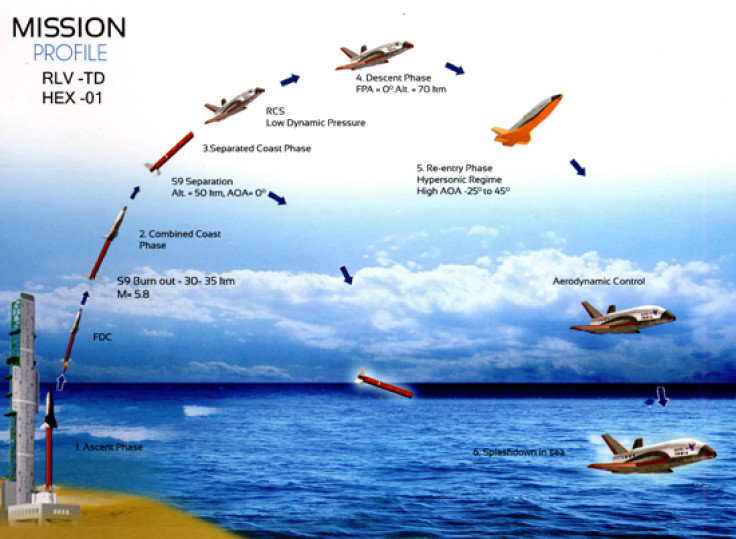Space mission: India plans to test winged reusable launch vehicle this year

India's space agency plans to test a winged reusable launch vehicle this March that can drastically cut costs of space flights in future.
The Reusable Launch Vehicle-Technology Demonstration Program or RLV-TD is a series of technology demonstration missions aimed at realising a Two Stage To Orbit (TSTO) fully re-usable vehicle.
It will be tested for powered cruise flight, autonomous landing and hypersonic flight using air-breathing propulsion, according to the Vikram Sarabhai Space Centre (VSSC).
The VSSC deputy director S Somanath told press during the ongoing Indian Science Congress in Mumbai that Isro has completed ground tests on the vehicle and is in the final phase of conducting a hypersonic test flight and landing in water.
"It will be a winged vehicle that will take off vertically like a rocket and glide back to land horizontally like a plane," said Somanath.
Each time a satellite is launched, space agencies have to deploy expensive rockets which break up in different stages of burn off.
Space orbiting currently costs around 3277 pounds ($5,000) per kg and the agency plans to bring it down to 10% the cost at 327 pounds ($500), he said.
Fitted with solid strap-on thrusters similar to the ones used in PSLVs, the reusable vehicle will fly at five times the speed of sound (mach 3) to reach an altitude of more than 100 km in five minutes.
After activating its fin and wing controls, the vehicle will glide a bit before starting its descent and land in the Bay of Bengal within 20 minutes of lift-off, reports Times of India.
The next test will attempt to land the vehicle on a 2 km runway after releasing it from an aircraft from a height of about 5 km. The third step would be to take it to a higher altitude and try the ground landing.
The only two other vehicles to be used as partially reusable launch vehicle were the US space shuttle that was used for 135 missions and the Russian shuttle Buran that was used just once. Some components of both were expendable.
MOM to go through eclipse in June
The space agency has been riding the wave of success following its Mars mission which has far exceeded expectations and continues to orbit the planet with an extended lifespan, and the test flight of its heaviest rocket GSLV Mk3 that also saw the retrieval of an unmanned crew module.
K Radhakrishnan, the agency's former chairman who recently retired, told the Science Congress that an eclipse during June will see the MOM undergo another test when all communications with Earth will be cut off for a fortnight.
MOM will be fully in autonomous mode during the period when the Sun comes between Earth and Mars. The project director Subbiah Arunan is confident MOM will brave the period.
© Copyright IBTimes 2024. All rights reserved.






